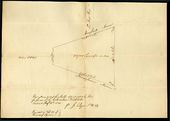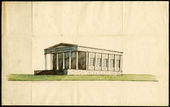Columbian Institute
[http://www.nga.gov/content/ngaweb/research/casva/research-projects.html A Project of the National Gallery of Art, Center for Advanced Study in the Visual Arts ]
Overview
Alternate Names:
Site Dates:
Site Owner(s):
Associated People:
Location: Washington, D.C.
View on Google maps
History
x
Texts
- Memorial of the Columbian Institute, December 1818, describing the Columbian Institute, Washington, D.C. (quoted in O'Malley 1989: 123)[1]
- "[Columbian Institute lottery for] enclosing the grounds, for the erection of their hall—their laboratory—their hot and green houses,—their library and museum, and for the cultivation of the botanic garden, wherein they hoped 'to soon present to the view of their fellow citizens specimens of all the plants of this middle region of our country, with others exotic and domestic . . . for the promotion of a great national object.'"
- Commissioner of Public Buildings, June 9, 1827, describing the Columbian Institute, Washington, D.C. (quoted in O'Malley 1989: 133)[1]
- "The new section of the Washington Canal was laid out along a line drawn through the middle of the Capitol and of the Mall. The pathway, canal and plantation in the garden do not coincide with this line, but diverge from it at an acute angle."
Images
Other Resources
Notes
- ↑ 1.0 1.1 Therese O'Malley, "Art and Science in American Landscape Architecture: The National Mall, Washington, D.C. 1791–1852" (unpublished Ph.D. dissertation, University of Pennsylvania, 1989), view on Zotero.

